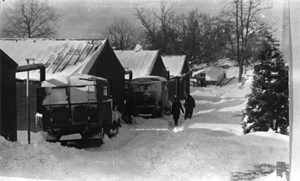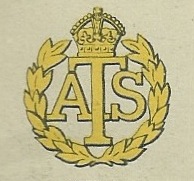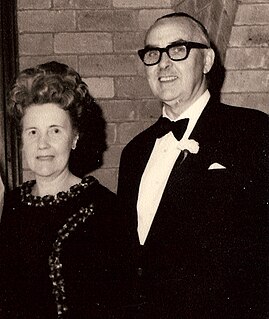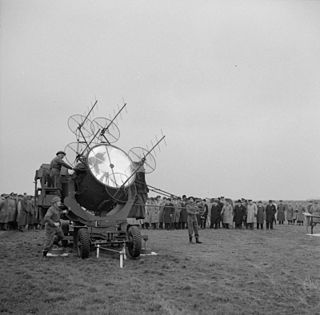Related Research Articles

Anti-aircraft warfare, counter-air or air defence is the battlespace response to aerial warfare, defined by NATO as "all measures designed to nullify or reduce the effectiveness of hostile air action". It includes surface based, subsurface, and air-based weapon systems, associated sensor systems, command and control arrangements, and passive measures. It may be used to protect naval, ground, and air forces in any location. However, for most countries the main effort has tended to be homeland defence. NATO refers to airborne air defence as counter-air and naval air defence as anti-aircraft warfare. Missile defence is an extension of air defence, as are initiatives to adapt air defence to the task of intercepting any projectile in flight.
The Royal Radar Establishment was a research centre in Malvern, Worcestershire in the United Kingdom. It was formed in 1953 as the Radar Research Establishment by the merger of the Air Ministry's Telecommunications Research Establishment (TRE) and the British Army's Radar Research and Development Establishment (RRDE). It was given its new name after a visit by Queen Elizabeth II in 1957. Both names were abbreviated to RRE. In 1976 the Signals Research and Development Establishment (SRDE), involved in communications research, joined the RRE to form the Royal Signals and Radar Establishment (RSRE).
The Defence Research Establishments were a number of separate UK Ministry of Defence Research Establishments, dating back to World War II, World War I, or even earlier. Each establishment had its own head; known as the Director or the Superintendent. Prior to the formation of the Ministry of Defence each of the three Services, i.e. the Royal Air Force, the Admiralty and the War Office, had their own research establishments; although some establishments had tri-service functions.
Ivan Alexander Getting was an American physicist and electrical engineer, credited with the development of the Global Positioning System (GPS). He was the co-leader of the research group which developed the SCR-584, an automatic microwave tracking fire-control system, which enabled anti-aircraft guns to destroy a significant percentage of the German V-1 flying bombs launched against London late in the Second World War.

The Telecommunications Research Establishment (TRE) was the main United Kingdom research and development organization for radio navigation, radar, infra-red detection for heat seeking missiles, and related work for the Royal Air Force (RAF) during World War II and the years that followed. It was regarded as "the most brilliant and successful of the English wartime research establishments" under "Rowe, who saw more of the English scientific choices between 1935 and 1945 than any single man."
The Ministry of Supply (MoS) was a department of the UK government formed in 1939 to co-ordinate the supply of equipment to all three British armed forces, headed by the Minister of Supply. A separate ministry, however, was responsible for aircraft production, and the Admiralty retained responsibilities for supplying the Royal Navy. During the war years the MoS was based at Shell Mex House in The Strand, London.

The Auxiliary Territorial Service was the women's branch of the British Army during the Second World War. It was formed on 9 September 1938, initially as a women's voluntary service, and existed until 1 February 1949, when it was merged into the Women's Royal Army Corps.

Royal Air Force Martlesham Heath or more simply RAF Martlesham Heath is a former Royal Air Force station located 1.5 miles (2.4 km) southwest of Woodbridge, Suffolk, England. It was active between 1917 and 1963, and played an important role in the development of Airborne Interception radar.
The Aeroplane and Armament Experimental Establishment (A&AEE) was a research facility for British military aviation from 1918 to 1992. Established at Martlesham Heath, Suffolk, the unit moved in 1939 to Boscombe Down, Wiltshire, where its work continues following privatisation as part of the Qinetiq company.

A.C. Cossor Ltd. was a British electronics company founded in 1859. The company's products included valves, radios, televisions and military electronics. The company was purchased by Raytheon in 1961.
Signal Corps Laboratories (SCL) was formed on June 30, 1930, as part of the U.S. Army Signal Corps at Fort Monmouth, New Jersey. Through the years, the SCL had a number of changes in name, but remained the operation providing research and development services for the Signal Corps.

William Alan Stewart Butement was a New Zealand-born British-Australian defence scientist and public servant. A native of New Zealand, he made extensive contributions to radar development in Great Britain during World War II, served as the first chief scientist for the Australian Defence Scientific Service, then ended his professional career with a research position in private business.
Radar in World War II greatly influenced many important aspects of the conflict. This revolutionary new technology of radio-based detection and tracking was used by both the Allies and Axis powers in World War II, which had evolved independently in a number of nations during the mid 1930s. At the outbreak of war in September 1939, both Great Britain and Germany had functioning radar systems. In Great Britain, it was called RDF, Range and Direction Finding, while in Germany the name Funkmeß (radio-measuring) was used, with apparatuses called Funkmessgerät . By the time of the Battle of Britain in mid-1940, the Royal Air Force (RAF) had fully integrated RDF as part of the national air defence.
Sir George Gray Macfarlane was a British engineer, scientific administrator and public servant.
The London Electrical Engineers was a Volunteer unit of the British Army's Royal Engineers founded in 1897. It pioneered the use of searchlights (S/Ls) for port defence before World War I and for anti-aircraft (AA) defence during the war. In the interwar period it formed the two senior searchlight regiments of the Territorial Army, which defended Southern England during The Blitz. Detachments later served in the Battle of Crete and Siege of Tobruk.

John Robert Mills was a British physicist and scientific expert who played an important role in the development of Radar and the defence of Britain in World War II. After the war he continued his career working for various British government research establishments on a variety of projects until his retirement in 1977.

Searchlight Control, SLC for short but nicknamed "Elsie", was a British Army VHF-band radar system that provided aiming guidance to an attached searchlight. By combining a searchlight with a radar, the radar did not have to be particularly accurate, it only had to be good enough to get the searchlight beam on the target. Once the target was lit, normal optical instruments could be used to guide the associated anti-aircraft artillery. This allowed the radar to be much smaller, simpler and less expensive than a system with enough accuracy to directly aim the guns, like the large and complex GL Mk. II radar. In 1943 the system was officially designated Radar, AA, No. 2, although this name is rarely used.
The Air Defence Research and Development Establishment (ADRDE) was a civilian research organization run by the War Office that primarily studied the development of radar for British Army use. It was formed in 1941 from the merger of the Air Defence Experimental Establishment in Christchurch, Dorset and the "Army Cell" that had previously worked on radar design within the Air Ministry's Telecommunications Research Establishment at Bawdsey Manor.
The Radar Research and Development Establishment, RRDE for short, was a civilian research organization run by the United Kingdom's Ministry of Supply that primarily studied the development of radar for British Army use.
The Searchlight Experimental Establishment, or SLEE, was a Royal Engineers research group who studied the improvement of searchlights and other anti-aircraft systems like sound locators and predictors.
References
- "War Office: Air Defence Experimental Establishment". The National Archives.